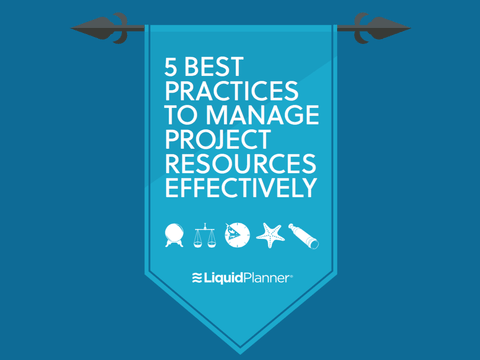What are your top project management frustrations?
I often hear “my business customers,” because that’s usually what the work is connected to, and making customers happy can be frustrating. However, in my opinion, this answer doesn’t count because you’re paid to solve problems and deliver solutions for them. There are other more significant project management frustrations—aggravations that live inside the PM process itself.
We all have our pet frustrations that make the job of managing projects that much more challenging. But there are ways to alleviate some of these.
Here are the top five frustrations for project managers—with solutions.
- Poorly defined requirements
Poorly defined requirements lead to poorly defined scope and constantly changing requirements. Without an agreed-upon scope and realistic requirements, a project schedule becomes difficult to maintain—at times even useless.
I once worked on an infrastructure project where the end-user access needs kept changing. At first, the users were supposed to connect directly to the database using a VPN; then it switched to public internet access. At multiple points in the project, the team thought we had agreed on the requirements, only to have the technical requirements change months into the project. It’s impossible to maintain a project schedule when the underlying architecture keeps changing due to incomplete information and insufficient participation from key subject matter experts.
Solution:
- Identify a clear product owner. This is the key person who will agree to the functional and nonfunctional project requirements.
- Document the requirements. There are many techniques to gather requirements ranging from a simple list to user stories and UML diagrams. Pick the solution that works for your project and capture the requirements.
- Gain agreement on the requirements with the product owner. If the product owner provides a proxy, document the requirements explicitly and gain agreement.
- If a requirement needs further definition, spend the time clarifying the requirement. If possible, prioritize the defined requirements first; this way, the development team isn’t waiting for all the requirements to be 100 percent defined before development can begin.
- Unnecessary administrative burden
There’s nothing more frustrating than telling the same story in multiple formats. However, redundant status reporting and special one-off updates seem to proliferate in unstructured and even structured organizations. How many of you update your project schedule only to turn around and enter time into a separate timekeeping system against a different set of tasks? How often do you update a status report only to fill out a different format for a separate reporting work stream?
Solution:
- Work with the project office and various programs to define a standard reporting template
- If a new reporting template is required, offer to provide the current one to the requestor and have the requestor integrate for their own project.
- Implement an integrated collaboration and scheduling solution (like LiquidPlanner) that updates project schedules and timesheets
- Identify ways to reduce the administrative burden and focus on communication over templates. If you don’t find proactive ways to manage all these requests, you’ll be overwhelmed with different formats and data gathering needs.
- Influencing peers with competing interests and priorities
Influencing someone to do a job that they don’t want to do or competes with their current priorities is a frustration as well as an art in people management. For example, on an HR project I was working on, Kate was responsible for keeping the corporate directory up to date. The project needed a clean list of user profiles from the corporate directory. The directory was a mess but cleaning it up wasn’t Kate’s top priority. Despite several requests and meetings to gain buy-in, the corporate directory wasn’t cleaned up until two weeks before the system launch date.
Rather than letting the project stumble, my colleague and I reviewed 5,000 rows of data and cleaned up the system manually.
Solution:
Ideally, the solution here should have gone as follows:
- Explain the situation.
- Seek buy-in.
- If the work isn’t agreed to or delivered, raise the issue to prioritize it within the management chain.
- When all else fails, determine if you can do the work yourself.
- Communicate upward and ask for help.

- Fighting fires
Here’s a scenario: On your drive into work, you mentally prioritize your day, and upon checking your email, you receive the latest “fire drill” that needs to be resolved. Your boss requests a complete business case justification for next year’s proposed project portfolio. The request is suddenly urgent because his boss is requesting information for an upcoming CIO review. The fire drill will disrupt your entire day. You had project meetings and other important work to do.
Solution:
- Negotiate the timing and scope of this sudden ad hoc project.
- Communicate the impact it has on your current work.
- Attend the necessary project meetings and decline the optional meetings.
- Focus on the highest priority items to complete the fire drill request.
- Be prepared to work a few additional hours to manage the new request and the original plan.
- Once the work is complete, share the impact with the management team.
- If responding to fire drills and ad hoc projects is the rule rather than the exception, start looking for a different role with more organizational maturity. As a PM, you’ve got to protect the project. Fire drills can take you off task.
- Increasing demands with insufficient resources
For once, your project is performing according to the schedule, issues are being managed and the team is working together as efficiently as ever. The next day you somehow inherit a new critical project with a mandated date that your team has to magically absorb and attain. Your boss doesn’t want to understand the challenges of managing the Triple Constraint, or that you will be using already committed resources. You have an order to just make it happen.
Consequently, and your team spend a week understanding the new project’s scope and develop a recommended strategy. Suddenly, this new hot project is put on hold due to a pending strategic decision. Your team just lost a week chasing a “project squirrel” when they could have been working on the project.
Solution:
- Develop a resource model that defines your current team commitments.
- Modify the resource model to accommodate the new request.
- Share the impact to the current project assuming resources don’t change.
- Request additional resources if both projects are expected to maintain their given delivery dates.
I’ve been in situations where resource modeling works well and I’ve been in others where management rationalizes the resource need and assumes the team has “Super PMs” or “Super Developers” that can magically do the work of two or three resources. Organizations that understand resource management will appreciate a resource model and work to find resources to support both projects. If you’re in an organization that doesn’t understand resource capacity, you’re in for a world of reactive planning and missed commitments.
Really, I’m not complaining
Hey, I’m not complaining. I really enjoy delivering projects for my business partners. But as with many things in life, every project has its own set of issues and frustrations. As project managers, it’s our job to handle these frustrations and find creative ways to resolve them. Otherwise, they’d call this a hobby, and I doubt many of us would want to juggle project frustrations for personal enrichment.
Here’s one great way to minimize project frustrations: know how to manage your resources, really manage them. To learn how, download our eBook, 5 Best Practices to Manage Resources Effectively.








